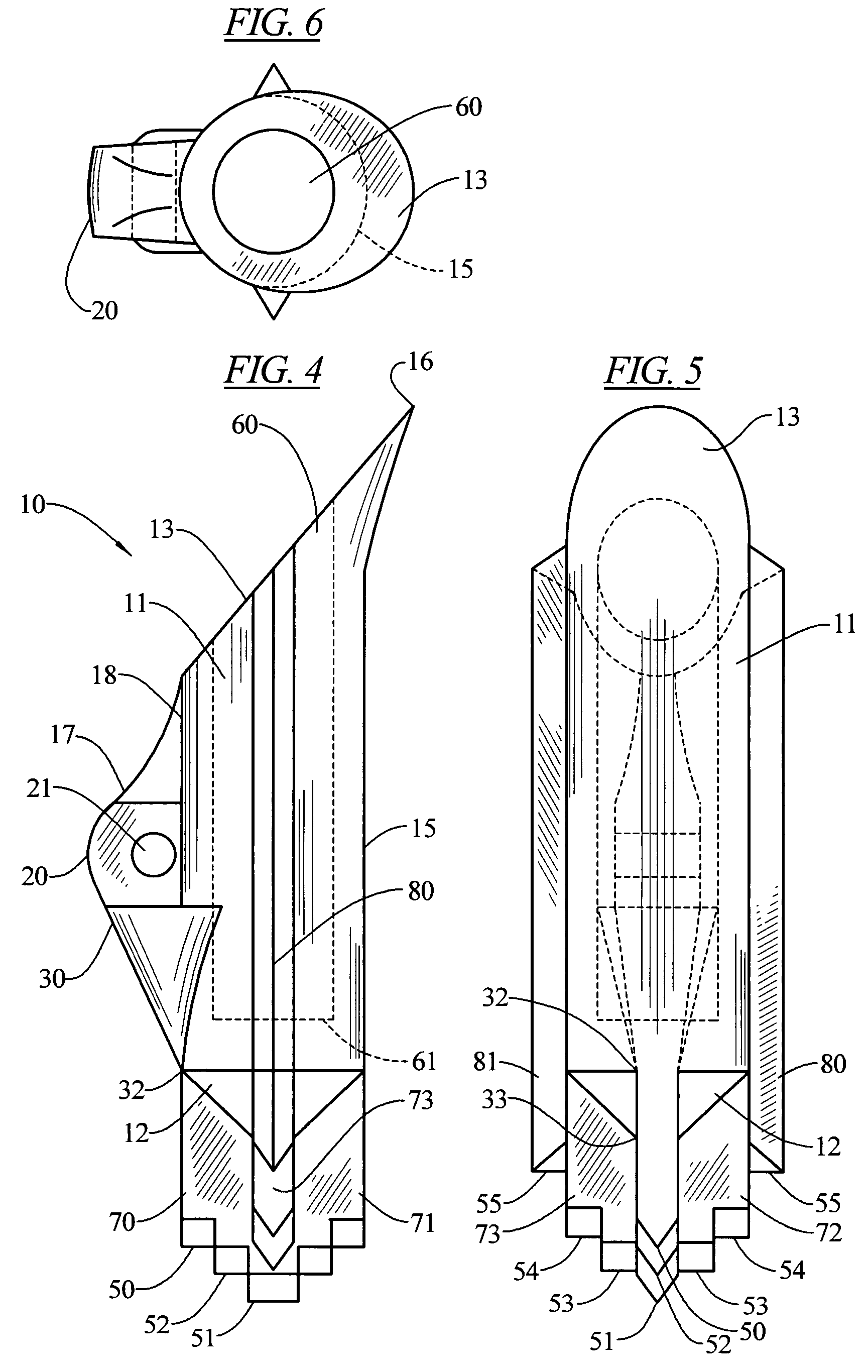Earth anchor
a technology of earth anchors and pivoting anchors, applied in mining structures, construction, foundation engineering, etc., can solve the problems of increased force necessary to pivot and lock anchors, difficult to drive into, and higher driving force, so as to improve the drivability, improve the drivability, and improve the straight line drive tendency
- Summary
- Abstract
- Description
- Claims
- Application Information
AI Technical Summary
Benefits of technology
Problems solved by technology
Method used
Image
Examples
Embodiment Construction
[0023]As shown in FIGS. 1 and 2, the anchor 10 of this invention consists of a generally cylindrical main body portion 11 which may have a generally conical leading end 12 and a trailing end 13 formed at an oblique angle to the longitudinal axis of the main body. The trailing end 13 incorporates at a bottom 15 of main body 11 an outturned lip 16 which will bite into the soil surrounding the anchor after it has been driven to its desired depth and a withdrawal load is applied. A rib 17 is formed on a top 18 of the main body 11, and in the embodiment illustrated, includes a projecting central section 20 projecting furthest from the top 18 of any portion of the main body, that section 20 being provided with an opening 21 extending transversely therethrough.
[0024]The opening may have a cable threaded through it and clamped back on itself or may provide a fixture point for a shackle to which a cable or a rod may be attached. Numerous other fixture examples for attaching the anchor wire o...
PUM
 Login to View More
Login to View More Abstract
Description
Claims
Application Information
 Login to View More
Login to View More - R&D
- Intellectual Property
- Life Sciences
- Materials
- Tech Scout
- Unparalleled Data Quality
- Higher Quality Content
- 60% Fewer Hallucinations
Browse by: Latest US Patents, China's latest patents, Technical Efficacy Thesaurus, Application Domain, Technology Topic, Popular Technical Reports.
© 2025 PatSnap. All rights reserved.Legal|Privacy policy|Modern Slavery Act Transparency Statement|Sitemap|About US| Contact US: help@patsnap.com



